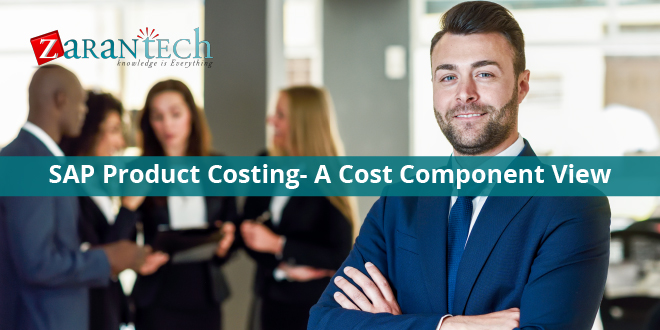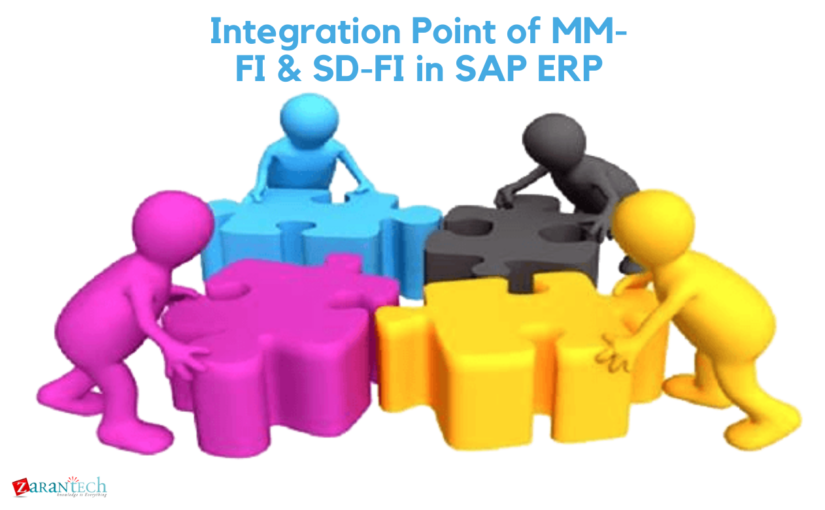SAP Product Costing- A Cost Component View
Category: SAP FICO Posted:Jun 20, 2020 By: Alvera Anto
This article is based on the SAP Product Cost Planning and in the process of getting a better understanding of the importance of cost component views in product cost estimates.
The cost component split and cost component views offer valuable understanding into a cost estimate. Setting up cost components appropriately in a cost component structure leads you to a multi-faceted understanding of a product cost within a single cost estimate. At the beginning of the implementation, our concern was to develop standard costs and we ignored additional details we might have acquired with a better understanding of cost component views.
Figure 1: Cost Component Configuration:
When you define a cost component with transaction OKTZ Settings control how you use it in a material price cost estimate whether the cost component pertains to updating material master fields. Each highlighted item defines a category of cost. A cost component can be assigned to more than one category, with the exception of Cost of Goods Sold which specifies one of two categories. Cost elements assigned to this cost component can either be for Cost of Goods Manufactured or Sales and Administrative Costs or (Not Relevant for either).
Figure 2: Cost Component Views Configuration
A new application has eight pre-configured views as shown in Figure 2. You can specify more.
Figure 3: Cost Category Assignment to Cost Component Views
Cost of Goods Manufactured is selected in the Cost of Goods Manufactured Cost Component View in Figure 3. Several categories can be assigned to a cost component view. For example, the Cost of Goods Sold Cost component view combines the Costs of Goods Manufactured and Sales and Administrative Costs. When you create a cost estimate, up to five Cost Component Views are shown in Figure 4 The costs displayed for each view are the cumulative values of the cost components in the cost estimate. You display the costs in any one of the views by selecting one.
Figure 4: Cost Component Views in a Cost Estimate
Multiple values are figured out when you create a cost estimate. The External Procurement view displayed in Number 4, is based on the Initial Cost Split shown in Figure 3, which represents only purchasing costs as long as you properly define the cost components. We missed this during our initial system implementation. We set up all cost components to be the same and missed out on the additional information that we can have quickly obtained. As an example, although we were interested in accounting for the effect of purchasing costs in our product, we totally missed what the External Procurement view might do for us.
We might have also more easily accounted for the impact of transfer pricing with the appropriate configuration of the Transfer Price Surcharge category. You can change the cost component definitions without triggering cost component split issues and you can see the results right away in existing cost estimates. The costs related to each cost component view are created dynamically when viewing a cost estimate with CK13N.
You can update material master fields from the cost estimate. In addition to the Standard Price in the Costing two view, you can update three commercial inventory prices and 3 tax-based inventory prices in the Accounting 2 view. You can also update Planned Price fields in the Costing 2 view. You can only update the Standard Price with the Inventory Valuation cost category. The combined costs associated with all cost components assigned to that category make up the standard price.
Figure 5: Costing Type Price Update
The Price Update field in the Costing shown in Figure 5 specifies which material master fields you can update by the Costing Variant. The possible entries are No Update, Standard Price, Tax-based Price, Commercial Price, and Prices Other than Standard Price. Commercial and Tax-based Price updates contain a determination of lowest value logic. Commercial Inventory prices can only be updated from the Commercial Inventory cost component view, and Tax-based Inventory prices can only be updated from the Tax-based Inventory cost component view. For costing types defined as Prices Apart from Standard Price, you have more flexibility regarding which views you can update. You can utilize costing variants with this costing type to update the Planned Price fields in the costing 2 view as well as the Commercial as well as Tax-based Inventory fields on the Accounting 2 tab. Cost component view comes into play for the updates as only the Commercial Inventory view can upgrade the Commercial Inventory areas and just the Tax-based Inventory view can update the Tax-based Areas.
However, the “Determination of lowest value” logic is ignored for costing types with this price update definition, and the value specified in the cost estimate is always used for these fields. The costs related to Planned Price 1, Planned Price 2, and Planned Price 3 can be assigned to the costs of any kind of cost component view. You can utilize these fields to store alternate cost component view prices. You specify the cost component view when you do a price update with transaction CK24, as shown in Figure 6 Since the costs for all costs component view are created for each cost estimate, all nine areas can be updated at the same time. You use Transaction CK24 not just to Mark and Release the Standard Price, however also to update various other prices by selecting the options in the Update Prices in Mater Master Record section shown in Figure 6.
Figure 6: Rate update with “Prices Apart From Standard Price”
The correct setup of cost component views is an important feature of product costing that can be ignored in several initial implementations. At least this was the case in ours. During the time crisis of performing an implementation, choices should be made rapidly and without a full understanding of the possibilities, and you may not have the ability to get the complete advantage of what the system offers you. Continue to take advantage of learning opportunities and look at the state of your implementations to learn what extra you can get out of your investment.
Bottomline
The cost component split and cost component views offer valuable understanding into a cost estimate. Setting up cost components appropriately in a cost component structure leads you to a multi-faceted understanding of a product cost within a single cost estimate.
If you are planning to boost your skills, choose our best online training platform, and learn from industry experts. So what are you waiting for? Visit ZaranTech, to skyrocket your career with the unique learning needs because Learning Never Exhausts The Mind.
Check out this insightful video on SAP FICO Tutorial for Beginners:





 99999999 (Toll Free)
99999999 (Toll Free)  +91 9999999
+91 9999999